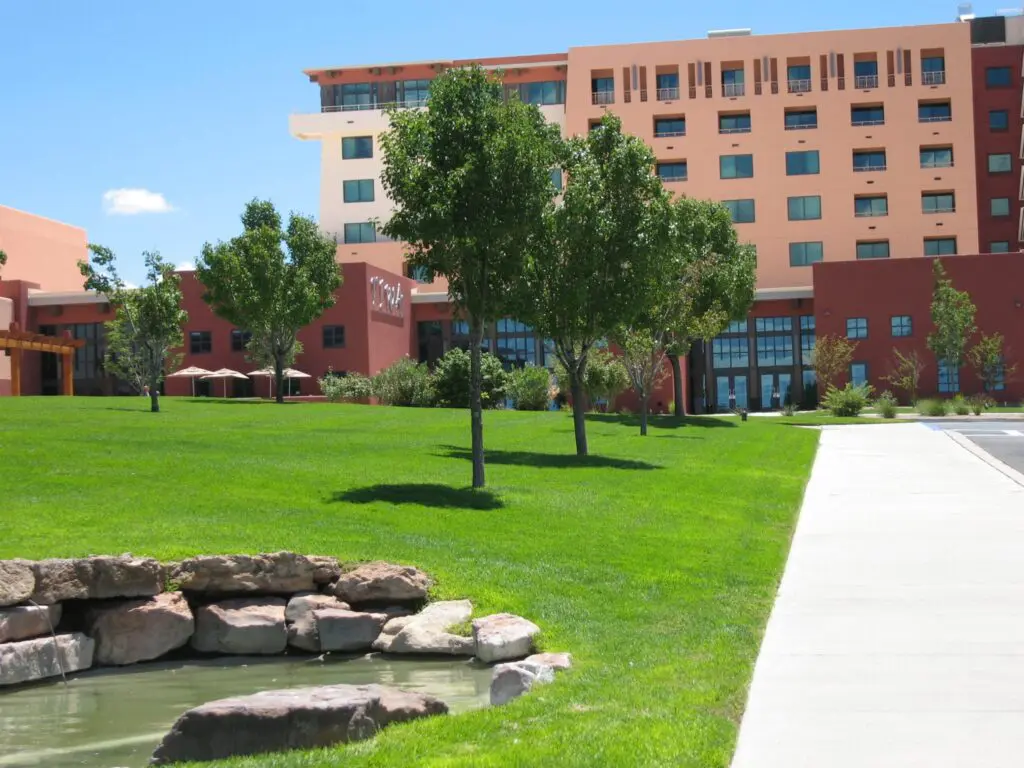How Do I Keep My Lawn from Dying in One Hundred Degree Heat and Still Get It Super Green?
Who doesn’t like to have beautiful lush green lawn in front of their house.
But, with the change of seasons, maintaining lush, thick grass can be challenging. You would never guess that to keep your lawn green in the summer is really much simpler than it seems.
We’ll discuss why your grass becomes discolored in this post, and show you how to keep your lawn healthy in the heat, in a few easy steps you can start taking today.
What Causes Your Lawn to Lose Color?
Before you learn how to maintain a healthy lawn in the heat, you must first understand why your lawn may be suffering. There seem to be three main reasons why. We’ve listed below some of the most common reasons why your lawn isn’t turning out as green as you want it to.
Improper Watering
If you water your lawn too little or too much, you may not be completely soaking your roots. Also, when you water your grass in the day is another factor that can encourage its growth. This is why it’s all about finding balance in order to develop your watering habits, which we’ll discuss later in the blog.
Improper Mowing
It is important not to mow your lawn too low, or to let it go too long in between mowing. We’ll take a look at the effect of how long your grass is on its growth and water uptake later in the blog.
Disease & Pests
The warmer it gets, the more likely your lawn is to encounter disease, pests, or other injuries. Oftentimes, these issues are related to your watering patterns and can easily be avoided once you know the right way to properly hydrate your grass.
How to Have a Green Lawn in Mega Summer Heat
Now that you know what causes lawn summer decline, it’s time to discuss how to fix it. Here, we lay out seven steps that we hope will help you keep your lawn green this year.
Soak the Grass
During dry periods of time, your grass is going to go into dormancy, as it’s hoping to preserve as much energy as it can. It will become brown or tan when the grass is dormant. By watering your grass as it should be, you can prevent it from falling into dormancy and encourage deep roots.
Replicate Rainfall
The most important watering practice to adopt is to learn how to water your grass to keep the grass green but using a process that replicates rainfall. That means it gets to soak for long periods, and not all that often. Watering deep, but less often, helps to wet the root system. You may water your grass approximately 3-4 times a week; watering approximately 1 inch of water per week.
Consider Where Your Water Will Flow
Too many homeowners waste time and money since they water sidewalks or paths, which results in runoff. This can be prevented by watching where your water accumulates and moves.
If you see runoff or can tell puddles are beginning to form, attempt moving your sprinkler elsewhere. If you notice big puddles of water, turn your watering system off for 15 to 20 minutes so that the water has a chance to get soaked up.
Avoid Watering in the Rain
As you learn how to care for lawn when it is hot outside, you’ll also want to take a flexible approach to your watering schedule. If inclement weather is on the horizon, take action to avoid overwatering your lawn and deactivate your sprinklers. If heavy rains fall, plan to skip watering for a day or two so the sun can dry out any waterlogged soil.
Stay Away from Hot Water
The temperature of water is very important when it comes to understanding how to keep grass alive in summer. So if your garden hose is just sitting outside in the sun, that water in it is getting real hot and not going anywhere.
Using this water to hydrate your grass can eventually backfire because it ends up burning your lawn. Don’t forget to drain any water out of the hose after each use to prevent damage to your grass.
Aerate Your Lawn
You can also aerate your lawn with a garden fork. Insert the fork at 1-foot intervals into the ground. Aerating your lawn is a must when it comes to figuring out how to keep lawn healthy in hot weather because it provides the soil with an opportunity to breathe. It’s also a good fit if you notice that runoff is frequent. The holes allow the grass to draw in the water faster and more easily.
Stop Weeds from Spreading
This one may go without saying, but weeds can be critical to understanding how to keep your grass green, as they have the power to stifle your lawn’s growth. The best method of weed control is simply to take care of the weeds as soon as you spot them. This implies that you have to remove unwanted plants manually using your hands or any gardening tools.
Pulling them yourself is even better than putting down weed repellant across all of your yard at the same time. But if you see a big patch where weeds are getting out of hand, it’s also fine to put a repellent on just that spot.
Watch Out for Wear & Tear
Your lawn is likely to get a lot of foot traffic during the warmer weather. This can be from friends, family, and even animals. Unfortunately, over-use can damage the structure of your lawn.
One of the most effective ways to combat this is to overseed your lawn in early fall. By doing this you will begin to thicken your lawn for the spring season and also start to help any damage that might have been done throughout the
